Five new members joined the Community Development Advisory Council in January, bringing knowledge of housing, childcare, digital inclusion, philanthropy, and banking. Working with the Federal Reserve Bank of Kansas City drew them in. So did the chance to connect with other members of the advisory council. “I was intrigued once I saw who else was on the council,” Brenda Sharp said, “and the diversity of backgrounds and diversity of thought that will be coming to this.”
Council members advise the Bank on current developments and emerging issues in community and economic development. The five new members join eight returning members of the CDAC. Each member serves a three-year term. The group meets formally twice a year and members provide insights year-round.
We talked with each to learn who they represent, the trends they see coming, and why they applied to serve on the CDAC.
Anne Brandt
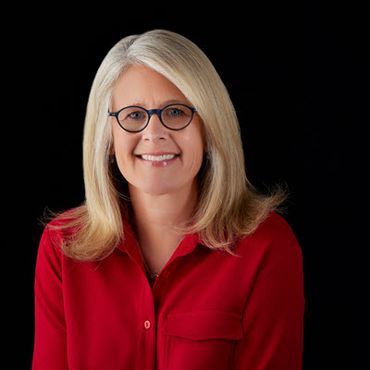
Executive Director, Lincoln Littles
Lincoln, Nebraska
Community Connections: Tell me about a community you’ll be representing on the CDAC.
Anne Brandt: Lincoln Littles represents children and families seeking childcare. In Lincoln, 74% of children under six have all parents in the workforce, higher than the national average of 68%. So we’re representing working parents who are trying to access affordable quality early care and education for their children. And we run a tuition assistance program for families who are in the gap. They make more than the subsidy rate would let them qualify for, but not enough to afford the high cost of quality care. In Lincoln the cost is between $10,000 and $13,000 a year per child.
The other community that I will be representing is the childcare providers who take care of these children. Their average hourly wage is between $11 and $13 an hour here in Lincoln. They’re taking care of people’s pride and joy at the most critical time for brain development and yet you can make more money doing almost anything else other than childcare.
I also want to be a voice for childcare providers. Business owners running childcare businesses are really operating on thin margins. Many of them are closing and did close during the pandemic, and so we have a shortage of childcare.
CC: When you think about this community five or ten years from now, what do you expect to be different?
AB: Lincoln Littles was a result of a community agenda. The Nebraska Public Policy Center and the Lincoln Community Foundation came together in 2014 to try to figure out how we can get more people to prosper. A survey asked the public what we could focus on to make a difference. Early childhood came out as one of three key strategies. From that, our work was born. That Lincoln recognized the need and has continued to support the work of Lincoln Littles is incredible.
So I’m hopeful. Childcare is on everybody’s minds. Our organization has been written into our Lincoln Chamber of Commerce’s strategic plan. Four years ago, that never would have been the case. And having the Kansas City Fed wanting information about childcare and someone who knows about it sitting on the CDAC, is huge.
CC: Why did you agree to serve on the CDAC?
AB: What’s happening in Lincoln is not unique to Lincoln. It’s happening all across the nation. When I saw you were interested in hearing from someone in childcare – and we are an advocacy organization, not a childcare provider – I thought it would be a great opportunity. I wanted to learn more about what it is that you all do, how it intersects with what we do. The Kansas City Fed is definitely a whole new world for me.
Amanda Brewer
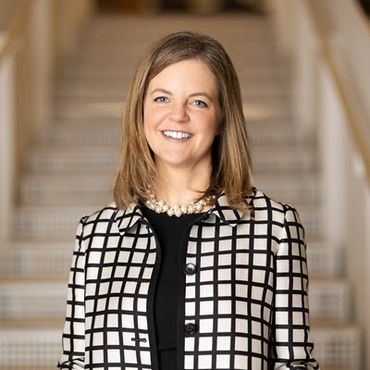
CEO, Habitat for Humanity of Omaha
Omaha, Nebraska
Community Connections: Tell me about a community you’ll be representing on the CDAC. Who are they? What are their circumstances?
Amanda Brewer: Habitat of Omaha serves families in five counties, which include urban and rural areas. What our families all have in common is that homeownership is out of reach for them, or the stability of the homeownership that they have might be at risk due to needing home repairs. They are manufacturing workers, first-year schoolteachers, paraprofessionals, health care workers, small business owners, the checker at your grocery store, the person who delivers your mail. These are all examples of people who have qualified to buy a house through Habitat for Humanity.
Because market conditions have changed drastically in the last few years a wider range of households qualify for our program. For example, for a family of four making $76,000, homeownership is out of reach without the support of either Habitat or some kind of gap financing.
The cost of an entry-level home in our urban area has gone up more than $100,000. A house that we built five years ago appraised at perhaps $130,000. Today, that same house style in a similar neighborhood appraises at $250,000.
CC: When you think about this community five or ten years from now, what do you expect to be different? What trends do you think will have an impact?
AB: I expect that more people in our community will see homeownership as a pathway to keep our communities thriving. Historically, people focused on that. Then the focus shifted to the individual, how an individual achieves homeownership, and less about how homeownership is good for neighborhoods. It truly is an economic driver. If the land in your community is owned by the people that live there, that has long-term positive ramifications that are different than if properties are owned by people not living in the community.
Another trend that I feel positive about is the involvement of companies in housing, thinking about their workforce. Without a strong housing stock, companies can’t attract talent. That is different than it was 10 years ago.
CC: It sounds like this is a mission for you, not just a job.
AB: It is. I’ve been at Habitat for 27 years. I grew up in a small town in Nebraska. I feel like the values I grew up with and the values of Habitat cut across so many fences. I’ve worked here a long time and so I see the results. I see people paying off their mortgages. I see our default rate is so low, and our foreclosure rate is practically nonexistent. That’s because people value their houses, and they know what that means for their children. And the banks we work with see the macro value of a strong community and a stable workforce.
Jade Piros de Carvalho
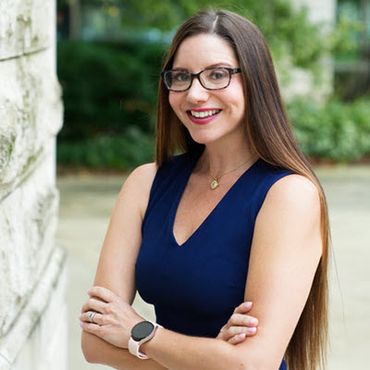
Director of Broadband Development, Kansas Department of Commerce
Lawrence, Kansas
Community Connections: Tell me about a community you’ll be representing on the CDAC.
Jade Piros de Carvalho: I moved recently to Lawrence, but I’m from Hutchinson, Kansas, and lived there my whole life. Hutchinson is a low- and moderate-income community, and I bring a lens from 10 years as an elected official on our city council in Hutchinson. Professionally, I see my role as elevating the need for digital equity across groups and people that have historically been disconnected,
Typically, it really comes back to rural. Out of 105 Kansas counties, only six or seven of them have not lost population. It’s a pattern across the nation. What do we do to make these spaces thrive? How can we provide this critical infrastructure, broadband? That’s my passion, connecting all of Kansas. But the rural areas are the areas largely missing this critical infrastructure. My focus is how we can bring broadband into these spaces to positively affect education, commerce, and healthcare so they don’t continue to struggle with population and opportunity loss.
CC: When you think about that community, what, if anything, do outsiders often get wrong about it?
JPC: People often think rural areas aren’t as in need of technology, that they’re not as technologically astute, or as entrepreneurial or innovative. There’s still that stigma of rural areas being backward. In fact, agriculture, the largest industry sector in Kansas, is increasingly reliant on broadband to compete. People in rural spaces need and should be able to access the same important everyday amenities that people in nonrural spaces are able to get. Just because you live in a rural area doesn’t mean you’re driving a horse and buggy. You need those things.
For example, Southeast Kansas is struggling with water access and is also probably the area struggling most with broadband infrastructure. It wouldn’t appear that those go together, but if you have precision agriculture in these spaces, you’re more able to conserve water. It’s important everywhere, and it’s critically important in areas that are already struggling.
CC: You’ll be taking your time to attend CDAC meetings and share your insights with the Kansas City Fed. Why did you agree to take this on?
JPC: I saw firsthand how effective the community development arm of the Kansas City Fed has been in moving conversations and informing policy and informing ideas. There’s a space for academics and there’s a space for talking about it. There’s a space for planning, but at what point are we going to move all of that into execution? And I saw the community development department doing that when they brought these trainings into newly formed broadband offices across the nation. They were instrumental in helping these broadband offices get off the ground. So I saw the CDAC not as a board that meets for the sake of meeting, but a board that wants to move ideas into the direction of change and is making needed change.
Lloyd Rainge
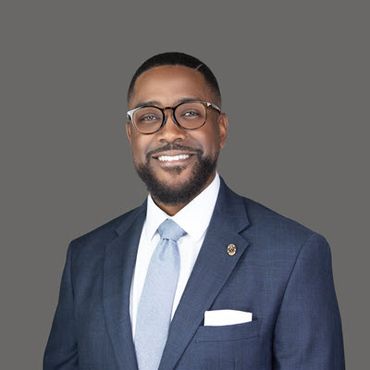
Vice President and Community Development Director, Capitol Federal
Lawrence, Kansas
Community Connections: Tell me about a community you’ll be representing on the CDAC.
Lloyd Rainge: I’m representing financial professionals who are dedicated to ensuring that underserved, low- and moderate-income individuals and families and also small businesses have the necessary tools, resources, and education to experience financial success.
CC: Is it a difficult or easy time to be a financial professional?
LR: It is always challenging in community development only because we are trying to bring individuals into the banking industry who may be unbanked or just have never experienced any sort of financial education, period. The challenge lies in our duty to implement programs that benefit the underserved. That requires research, partnerships, some vetting. We want to make sure that everyone we’re involved with, including those in the bank, have the best interests of the communities we serve at heart. And then we put together the right programs that are not handouts but are hands up that will help people.
CC: When you think about the financial community five or ten years in the future, what do you expect to be different?
LR: There will always be pockets of poverty, in my opinion. It’s incredibly important that we keep services available to individuals, to keep individuals in place who are mission-driven, to help give direction to those who may not feel they have the access they need to the banking industry.
Artificial intelligence (AI) obviously will play a role in banking operations, with all the automation and streamlined services that can be offered. Most of the improvements made through AI will likely be customer experience driven. But I think it’s still necessary for those who don’t understand banking to have someone there to explain what’s going on to confirm that what they’re doing will not hurt them. They need to understand what they’re getting into and to be aware of whatever pitfalls there may be by overlooking some detail.
I have a daughter. In her early teens, maybe 14, we encouraged her to get a bank account, one we had to hold with her as her parents. We tried to encourage her to understand how deposits and withdrawals work and how interest can accrue. Now she’s 25 and you wouldn’t even be surprised how much some of her peers don’t know that she understands.
CC: Why did you agree to serve on the CDAC?
LR: I saw this as an exciting opportunity. I’m looking forward to getting with other professionals in the industry, in financial services or other nonprofits, and understanding their passion, understanding what the challenges are they’re experiencing in their markets. I’m interested in being educated on those things. I look forward to our meetings being productive and informative and providing solutions that I can bring back to my area, my institution and all the markets we serve.
Brenda Sharpe
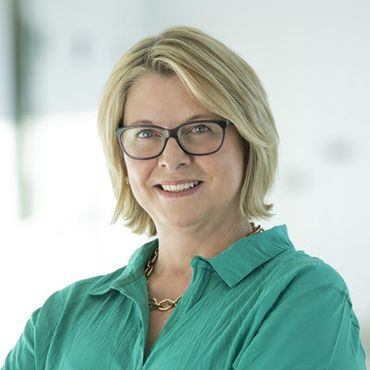
President and CEO, REACH Healthcare Foundation
Overland Park, Kansas
Community Connections: Tell me about a community you’ll be representing on the CDAC.
Brenda Sharpe: My work life has allowed me to become knowledgeable about a segment of our population that has difficulty or cannot access affordable health insurance coverage or access quality health care services. In our six-county service area in the Kansas City metropolitan area, about 100,000-150,000 people fall into that circumstance. These folks are generally lower income. They don’t have access to private or employer-based health coverage or that coverage is unaffordable. It includes people 18-64, because at 65 you are eligible for Medicare. It also includes folks who are not eligible for public benefit programs, such as immigrants or undocumented individuals who lack citizenship. These individuals also are an important population that the REACH Foundation serves.
CC: When you think about that community, what, if anything, do outsiders often get wrong about it?
BS: There are a lot of stereotypes, unfortunately, about people who use public benefit programs or “welfare” programs. There’s a misconception that people get on welfare and stay on welfare for the entirety of their lives. What I see much more frequently are people who have hit a rough spot. They have had an experience that has derailed them financially. They need to rely on public benefit programs while they get back on their feet. Most of the people in this category are working, but they may be working lower-wage jobs without access to health insurance.
CC: When you think about this community five or ten years from now, what do you expect to be different?
BS: Specific to the Kansas City portion of our region, most of our growth will continue to be outmigration from rural areas into more suburban and urban areas. I think we will see any population growth also being heavily influenced by newcomers to our country and our region. I expect that more people will probably need public health benefits at some point, as I don’t see signs of the affordability of health care improving soon because we have a privatized system of care in the U.S.
I do see some promising trends. Pharmacy costs, for instance. We might be starting to acknowledge there’s a significant discrepancy between what Americans pay for prescription drugs versus what people are paying for the same drugs in other countries and asking why that is.
I also think about technology advances that are happening very rapidly with the advent of artificial intelligence. I wonder if those technologies will be used to create greater efficiencies and cost savings for consumers, or if they will just reduce costs and increase profits for providers.
CC: Why did you agree to take on serving on the CDAC?
BS: I have always been intrigued by the enigma that is the Federal Reserve Bank of Kansas City. I want to understand better how its policies influence overall community health and quality of life.
